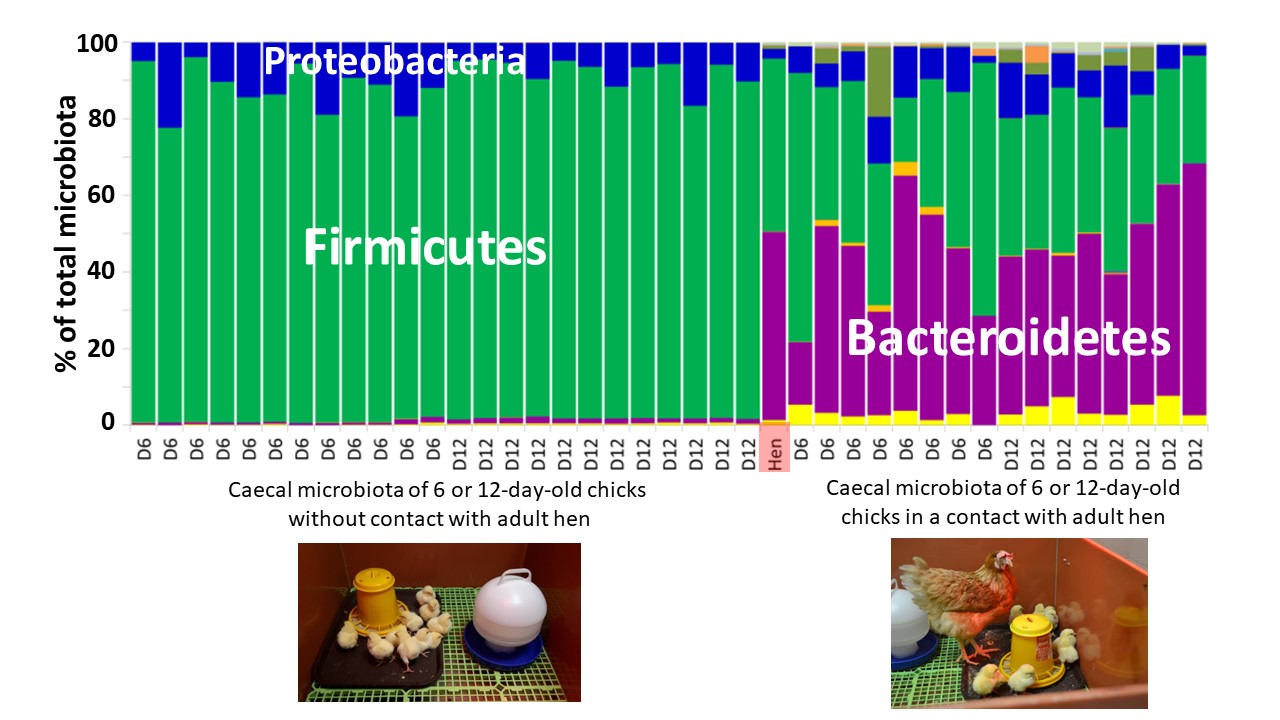
Chickens represent specific animal species for studies of not only gut microbiota. Key for correct understanding is to realise that hatching in hatcheries does not represent reference, but instead, highly experimental case. From a point of view of microbiota development, hatching in hatcheries is extremely unusual case. Common and reference is hatching in nests, in a contact with adult hen. This means that gut microbiota of chicken in commercial production is exclusively of environmental origin – what can but need not be sufficient. If chicks were hatched in nest, they would become colonised by adult type of microbiota within first days of their life by a mere contact with a hen. Such colonisation will make them resistant to wide range of enteric infections. This is why we gradually characterise bacterial species which are transferred from hens to chicks and test them as novel types of probiotics.
Once anybody accepts such postulates and fact, the following deductions are quite straightforward
- Gut microbiota in chickens from hatcheries develops slowly and throughout the development, chickens are sensitive to enteric infections.
- Gut microbiota in chickens in contact with adult hen develops differently from chickens from hatcheries. Chickens in contact with adult hen are colonised by adult type of microbiota within a few days of the first week of life. Such chickens are resistant to enteric infections from the very first days of their life.
- Gut microbiota members differently abundant in chickens from hatcheries and chickens in contact with adult hen can be identified and obtained in pure cultures (for additional details see here or here). These cultures can be used for the preparation of defined mixtures and administered to chicks as novel type of probiotics complementing absence of adult hen.
When planning animal experiments targeted at gut microbiota of chickens, it is important to realise whether the aim of the experiment is modelling commercial conditions, or whether biology of gut microbiota is more important than commercial production. In the former case, chicks from hatcheries will be reared without any additional intervention. In the latter case, treatment of the chicks with faecal material originating from adult hens (i.e. not three-week-old broilers!) is essential. Alternatively, chicks can be placed in a contact with adult hen. Final decision on experimental design is dependent on the aim of particular study. However, quite serious mistake is to proceed with experiment planning without considering these two extreme situations.
